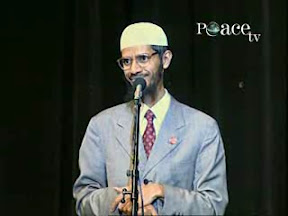Did You Know...?
- our skin is the largest and most versatile organ of our body.
- the skin is an acute sensory organ, constantly reporting current external conditions to the brain, to which the body responds by making internal adjustments.
- our skin is a large elastic-like garment that stretches as we stretch and moves as we move.
- our skin is totally "new" about every 27 days—the outer layer of our skin literally rubs off at the rate of about a million cells every 40 minutes, which our body replaces with new cells at an equivalent rate.
- our skin shields our body against injury, against invasion by foreign matter and disease organisms, and even against potentially harmful rays from the sun.
- that our skin controls our body temperature by regulating the release of body fluids.
- that our skin is equipped with thousands of nerve sensors distributed unevenly over its surface, through which we sense pain, feel temperature, and identify our environment by a very light touch.
- that the outer layer of our skin contains distinct ridges and dips which are determined before we are born and remain the same throughout our life. No two persons' fingerprints are identical.
Never underestimate the importance of your body's cloak, your skin. You might think of it as something superficial, just a lifeless wrapping, impervious to its environment. But that is not true. Our skin is another marvel of our Creator's handiwork in its design and functionality.
Approximately 2 square yards in total, and weighing 6 or 7 pounds, our skin is unlike any other organ of our bodies. It flexes, it folds, it stretches around joints, it wrinkles as we change our facial expression. It is sometimes smooth and soft, sometimes rough and sandpapery.
Structure...
Structurally, our skin, like every other part of our body, is a masterpiece of design. It consists of numerous layers, each having its own specific properties and functions. The layers are stacked with different orientations, much like plywood, in which the layers are crisscrossed, so that the finished product has much greater strength than a single board of the same thickness. (What element of chance determined this!—what chance designer produces plywood?) The layers of the skin are also designed in such a way that they provide a cushion to the delicate nerve endings, protecting them from external shocks.
The two major layers of the skin are the dermis (underneath) and the epidermis (above), on the surface of which is the dead or horny layer we commonly refer to as skin. Cell division in the skin occurs at a constant rate, because cells at the surface are constantly being rubbed or scuffed away (at a rate of about one million every 40 minutes) and must be replaced. To meet this need, cells at the base of the skin constantly divide and ascend through the different layers until they reach the surface, where they become hard and scale-like, and are eventually scuffed away. It has been estimated that the normal human skin cells take about 27 days, or one month, to travel from the base of the skin to the surface. This means that all our skin is “new” every month —another marvelous design of our masterful Creator, to keep us looking fresh and clean.
Examined under a microscope, a small cross-section of skin looks like a forest of fine hair growing on a terrain with thousands of interruptions. Every square inch of our skin holds up to 650 sweat glands, in addition to the many thousands of nerves, blood vessels and capillaries. In addition to all this, the skin is also riddled by an intricate mesh of lymph vessels which belong to the body's immune system. Who can say that we are not fearfully and wonderfully made?
The cells of the skin are attached to one another in a very special way. Instead of being tightly fused, each cell is attached to its neighbor cell by a zipper-like connection. This unique design allows nutrients and other essential substances to seep between the cells. It also allows for the easy movement of the skin cells, as they rise from the base of the skin to the surface. Can we say that such an arrangement is without design or intelligent direction?
Temperature Control
 |
| Thermal infrared imaging: the false-colours scheme displays the modification of the skin temperature distribution during an athletic exercise.
|
The functions of our skin are many. Primary is its task in regulating the internal temperature of the body by controlling the flow of blood through the body. Were it not for the regulating ability of the skin, we would perish from overheating.
The skin has two mechanisms for temperature control. First, it is pervaded by a tangled but orderly maze of blood vessels: arteries, veins and capillaries. Why does the skin need so much blood? It doesn't. But God has designed our skin to function as the body's temperature-control device. When the air around us is warm, the skin opens extra long routes for the blood to circulate through, allowing more blood to be exposed near the surface of the body, in this way increasing the loss of body heat. This is why our faces get red when we are too warm. When the air is cold, the skin shuts off these extra routes, the blood bypasses them, and in this way body energy is conserved (and we look pale). Also, when it is cold, our blood vessels contract in quick, successive rhythms (we call it shivering). This allows only a small amount of blood to flow through them. Did such an intricate system of control come about by mere chance?
Our skin's second means of controlling body temperature is through the millions of tiny sweat glands in it. Our body has between 2,000,000 and 5,000,000 of these glands. Sweat glands serve two distinct purposes. Distributed over our body, they keep our body from becoming overheated by secreting water upon the surface of the skin, so that the skin is cooled as the water evaporates. The largest concentration of these sweat glands — in the palms of our hands and the soles of our feet — provides friction and keeps the skin from becoming hard and insensitive.
Defense
 |
| Cathelicidins are strategically expressed and contribute multiple functions to skin defense. The human cathelicidin precursor protein hCAP18 is expressed by several cell types in the skin including keratinocytes, neutrophils, eccrine ducts, and mast cells. Cathelicidins are processed to active peptides such as LL-37 in neutrophils and more potent peptides in sweat. These peptides have been best characterized as natural antibiotics, killing a variety of bacterial, fungal, and viral pathogens. Other functions include chemotactic and angiogenic behaviors, and an ability to modify fibroblast proteoglycan synthesis. The N-terminal cathelin-like domain of the hCAP18 precursor protein contains both antimicrobial and proteinase inhibitor activity. |
Our skin is a silent sentinel always on duty, constantly gathering information about our environment and relaying it to the brain, which in turn signals the body's immune system.
Upon receiving a message of potential danger, the immune system immediately responds by mobilizing its fighting forces—and all without a conscious thought from us.
Our skin will even produce highly specific chemical substances and spread them over its surface to prevent harmful substances from penetrating. Who can think that all this marvelous system came about by chance?
Built into our skin is also a highly specialized defense against the harmful ultraviolet rays of the sun. This shield is the skin's pigment, called melanin. Our skin color is determined by a pigment manufactured in specialized cells that reside between the regular cells of the skin. All of us, regardless of our race, have about the same number of these special pigment cells; only the amount of pigment in the cells varies. When an area of our skin is exposed to the sun, these special pigment cells go to work and produce more melanin.
The newly made melanin granules flow between the skin cells and into those cells exposed to the sun, where they park between the nucleus and the surface of the cell. at position, the melanin acts as an umbrella over the cell's nucleus, protecting its important information (stored in the nucleus) from being damaged by the sun. The result is what we call a “suntan.”
Sensitivity
Our skin is our body's means of learning about our environment. With only a light touch we can tell whether a surface is hot or cold, wet or dry, smooth or rough, prickly or fuzzy.
This is possible because our skin is equipped with countless nerves, some of which lie as close to the surface as possible. We have some 640,000 of these nerves distributed over our body's surface, with several thousand to the square inch in some areas like the fingertips, the lips and the tongue, and the palm of the hand. Touch a very hot surface with the tip of your finger. The nerve endings in the fingertip instantly send a message to the brain by way of the spinal column, and in milliseconds the message is back to the finger muscle telling it to pull away from the hot object. It all happens so quickly that we do not give it a conscious thought. We simply pull our finger away, saying, “It's hot!” Because of the quick response, a minimum of damage is done to the skin at the point of contact.
The Marvel of Self-repair
Our Creator has designed our skin with a remarkable ability of self-replacement. It repairs expertly the minor injuries it suffers, and, given opportunity, will repair even major injuries almost equally well. And observe this amazing fact: that the repaired or replaced skin bears the same pattern of ridges and valleys which the former skin had! (What part of evolution makes this possible?)
Our hair and fingernails are an outgrowth of our skin, though scientists still do not fully understand how nails grow as they do. The color of our hair is determined by the color pigment which is loaded into the hair shaft as it grows, the amount determining the color. As we age, the center of the hair shaft becomes filled with tiny air bubbles, making the hair appear gray.
As long as the skin remains uninjured, it keeps the body's insides in and the rest of the world safely out. Despite daily scratching, ripping, tanning, burning, and exposure to irritating soaps and drying heat, the skin remains largely unchanged. It constantly relubricates itself and replenishes its outer surface.
Fingernails are a form of modified hair
What happens when we get a splinter of wood in our finger? Immediately a battle is set off within our body. Cells at the sight of the injury release chemicals which alert neighboring capillaries to the crisis. Immediately the tiny blood vessels in the area expand their walls and become porous. This allows additional blood to flow into the area. As a result, the skin reddens and heats up. The wounded tissue swells and becomes tender.
Within an hour, the body's small white blood cells have been summoned to fight the thousands of invading microbes that rode into the body on the splinter. These white blood cells speed to the battle sight, slithering through capillary walls, surround the invading bacteria one by one, and eat them. (Digestive enzymes produced by the white blood cell totally destroy the bacteria). Once one bacteria is destroyed, the white blood cell is ready to attack another invader, and another. All this happens without a conscious thought from us. We simply know that we got a splinter in our finger, we pulled it out, and in a short while it will begin to heal. If these white blood cells were not on duty, the invading bacteria would multiply and multiply, and soon our very life would be threatened—even by so small an injury as a splinter in our finger.
Who cannot bow in reverence to such a God, in whom we live, and breathe, and move? Who can say that we are not fearfully and wonderfully made? Indeed, “The hand that made us is Divine”!
"He is the One who perfected everything He created, and started the creation of the human from clay." [Quran 32:7]
--
Scientific information is taken from:
- Encyclopedia Britanica, 15th edition, Vol. 16, pp 839ff. Vol. 21, pp. 700ff.; Vol. 25, pp. 227ff.;
- Popular Science, Vol. 2, pp. 173ff
- The Incredible Machine, published by The National Geographic Society, pp. 157ff






































